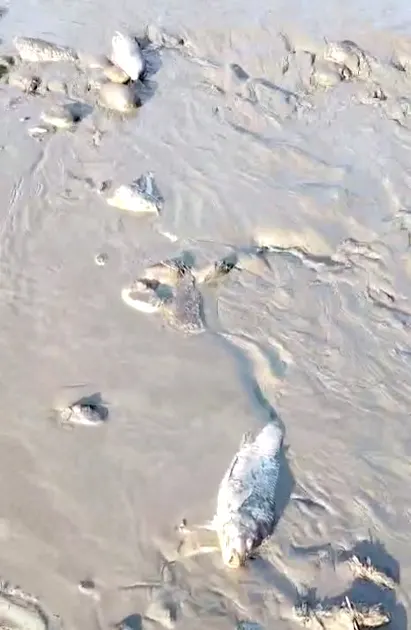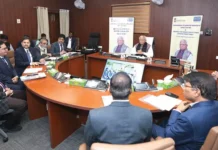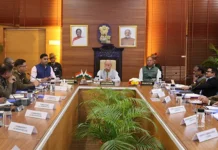[Tenjing Koyu]
ITANAGAR, 9 Jan: The Ranganadi (Panyor) river downstream of the 405 mw hydroelectric project is once again witnessing mass fish death, with the water turning turbid and emitting a foul odour. This recurring environmental crisis has left locals alarmed and demanding answers.
The murky black water and dead fishes along the banks have raised questions about water contamination and its potential impacts on human health and the aquatic ecosystem.
Ranganadi Hydroelectric Project Downstream Forum (RHEPDF) general secretary Tar Takam said, “In a recent meeting between the North Eastern Electric Power Corporation Limited (NEEPCO) and the RHEPDF, an agreement was reached to provide Rs 19 lakhs as compensation to the affected communities. The NEEPCO also assured the locals that it is taking proactive steps to address the issue, including the creation of artificial ponds to temporarily store fish.”
“Once the river’s water quality improves, these ponds will be used to restock fish in the river, mitigating the ecological damage caused by the recurring incidents,” Takam informed.
The blackening of the water and mass death of fishes occur around every five years due to maintenance activities at the dam. Although the NEEPCO claims to maintain the natural water flow during maintenance, the discoloured water and the death of fishes suggest lapses in ensuring adequate water quality.
Villagers downstream have long depended on the river for fishing and farming. The recurring water quality issue has not only impacted aquatic life but also disrupted livelihoods. Local farmers who rely on the river’s water for irrigation reported that the blackened water has rendered their irrigation channels unusable.
Over the years, downstream communities have repeatedly voiced their concern over reduced water flow, heavy siltation, and the destruction of the aquatic ecosystem. The lack of proper silt management and water quality monitoring remains a persistent issue.
As the crisis unfolds, the downstream communities are demanding long-term solutions that prioritise both development and ecological preservation. Without immediate action, the delicate balance between progress and sustainability in Arunachal Pradesh remains at risk.
Dr Akin Tana Tara, a resident of Cher village, said, “Every time a token amount of money offered by the NEEPCO won’t mitigate the sufferings of the downstream people.
“For the long term, we need only scientific solutions. Though there might not be any such solution as of now, scientific solutions should be searched for,” he said.
He added that “the government of India, including the chief minister, the deputy chief minister and union minister Kiren Rijiju, says that the dam being built over the Brahmaputra (Yarlung Zangbo) in China would dry India and Bangladesh and downstream Arunachal will be badly affected.
“They should first visit the downstream areas of the Panyor and the Kameng and see the actual suffering of their own country first and understand the sufferings of the downstream of big dams in Arunachal itself,” he said.
A notice was issued on 26 December, 2024 by the NEEPCO PLHPS general manager (technical), Yazali, informing the public that the NEEPCO will release the water of the Ranganadi river through the radial gates of the dam due to maintenance work in the power house in Hoj. The tentative timing for releasing the water is from 7 am. The maintenance work will take place from 7 January to 15 March.
The notice requested all the people residing near the reservoir area and the downstream banks of the Ranganadi to refrain from going to the reservoir, the riverbed or the rivers’ banks.
It requested the people to keep their livestock away from the reservoir area. It also gave an additional warning that the released water may carry silt and will be unsuitable for drinking.
The general manager sought cooperation from the stakeholders, including the villagers, to ensure safety and support for the maintenance work. (The reporter is an intern at this daily. He is a third-semester student of MA in Mass Communication & Journalism at Sikkim Central University.)






